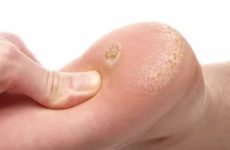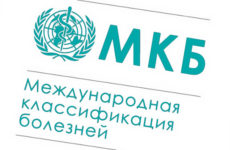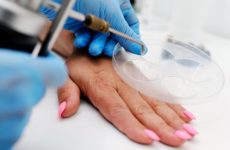Содержание:
Introduction
A wart is a predominantly benign growth that occurs anywhere on the human body. On the infected area, the process of epidermal hyperplasia is activated, which outwardly looks like a skin growth.
The aesthetics of appearance are lost and a lot of discomfort is added in the usual rhythm of life. This article will talk about the types of warts on the legs and how to treat them.
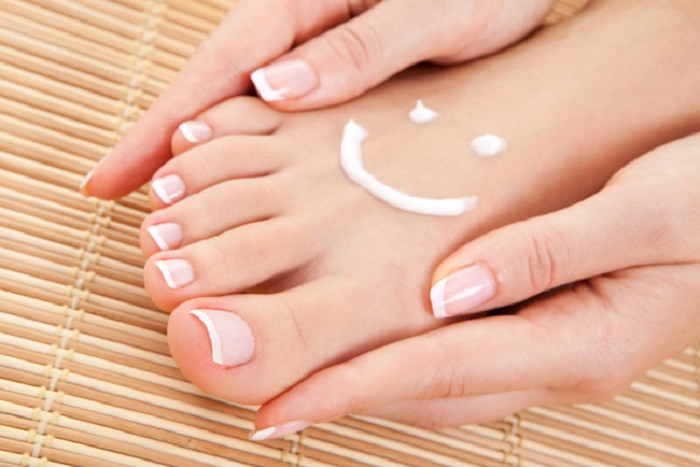
Causes of growths on the legs, why do they appear?
The main cause of warts is the human papillomavirus . Infection with the virus is carried out mainly by contact-household way.
The occurrence of warts is promoted by papillomavirus types 1-4. They are not oncogenic, therefore, the probability of malignancy of papilloma is negligible. Simply contracting a virus is not enough to cause warts. Special conditions and risk factors are required:
- weakening of the immune defense of the body (occurs against the background of cytostatic therapy, with imperfect immunogenesis, HIV, frequent and prolonged colds, diseases of the gastrointestinal tract, etc.);
- damage to the skin by a mechanical factor (scratches, cuts, wearing tight shoes);
- excessive sweating (poor-quality shoes often provoke increased sweating of the feet, which contributes to the appearance of not only an unpleasant odor, but also warts on the legs);
- liver failure (the liver is a filter of our body, a violation of its function leads to an increase in the level of toxins in the blood, which weaken the reactivity of the body);
- endocrine disorders (diabetes mellitus, hypothyroidism, obesity).
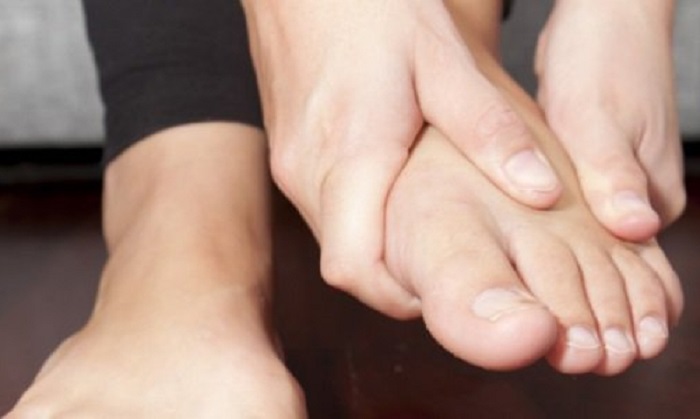
In adolescence, the body undergoes a hormonal surge, which leads to physiological insufficiency of the endocrine system. That is why most often warts on the legs occur in children aged 12 to 17 years.
Types of wart growths
- Simple (ordinary or vulgar) . Formations of rounded or irregular shape with clear boundaries, with a diameter of 1 to 10 mm. Usually have a flesh tone, however, the color can vary from yellow to brown. They are located mainly in the knee area, but they can be found on any part of the leg.
- Flat (youthful) . Warts with a smooth surface, in diameter do not exceed 5 mm. A clear boundary can be identified by the difference in the color of healthy skin and the affected one (from pink to dark brown shades). Localized on the legs and on the fingers.
- Plantar (plantar) . Occur when wearing low-quality narrow shoes, in which the feet sweat excessively. The formation is more often single, occasionally up to 6 grouped warts can be found. In the people, this species is also called “chicken ass”. Scaly yellow-gray plaque, irregular shape. In the center of the plaque, black blotches can be found, this is what the vessels that feed the growth look like. It is this feature that helps to distinguish a wart from an old callus.
- Interdigital . Dense in structure, predominantly flesh-colored. For a long time they may not disturb the patient. Round shape with clear boundaries, as they grow, they protrude more actively above the surface of the skin.
- Genital warts (venereal) . This type of warts mainly develops on the genitals and perineum. However, they may spread along the inner thigh. They are treated by gynecologists or urologists.
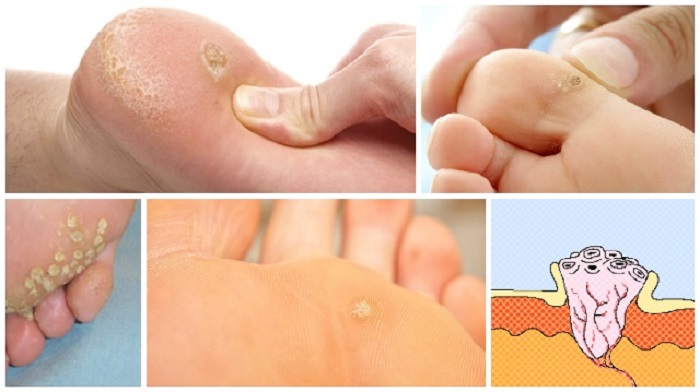
Symptoms and manifestations
Warts located on the plantar surface of the foot are manifested by pain when walking. This is characterized by the fact that they grow inside the skin. The longer the growth exists, the more pronounced the pain syndrome. Interdigital warts also become noticeable only when pain occurs.
Vulgar and flat warts have a different growth mechanism, so they rise above the level of the skin by more than 3 mm. They are not subjected to such pressure as the plantar ones, therefore, the pain syndrome is absent or minimal.
The main symptoms include pain when walking, the difference in color of the growth from normal skin, they look like nodules with a rough or smooth surface.
When should you seek medical help?
Given the fact that the cause of warts is a viral infection, treatment should be comprehensive. Antiviral therapy in combination with surgery helps to cure and prevent the appearance of new growths.
Many patients use chemicals (salicylic acid, celandine extract, cantharidin) to cauterize warts. With the irrational use of acids, a chemical burn or an allergic reaction may subsequently develop. Before any method of self-treatment of warts, you should consult with your doctor.
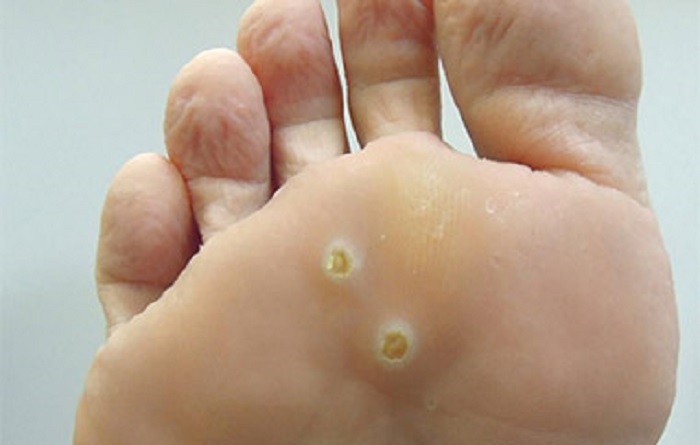
Clinical treatments
Below, we will not consider all methods of treating or removing warts in the clinic, but the most popular ones.
How to get rid of them with a laser?
The principle of the method is based on the layer-by-layer cutting of the wart. The procedure is painful, which is why local anesthesia is performed.
The duration of the procedure depends on the size of the build-up and varies between 10-30 minutes. Perhaps one visit will not be enough. In the postoperative period, pain will appear.
It would be rational to take antianginal drugs. After the removal of plantar warts, stepping on the foot will be prohibited. The risk of recurrence is less than 5%.
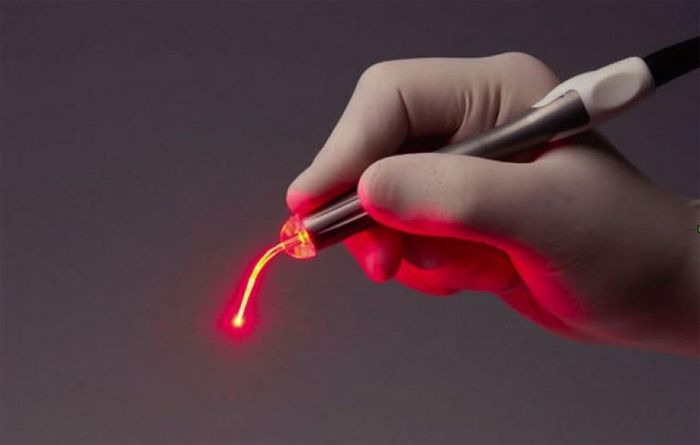
Cryosurgery will help you fight them
To carry out the manipulation, liquid nitrogen is used, which freezes the wart. Local anesthesia is not required before the procedure.
Nitrogen is applied to the wart with a swab or a special sprayer, kept for 30 seconds and the procedure is over. At first, the growth will thicken, and then turn into a blister, which will disappear within two weeks.
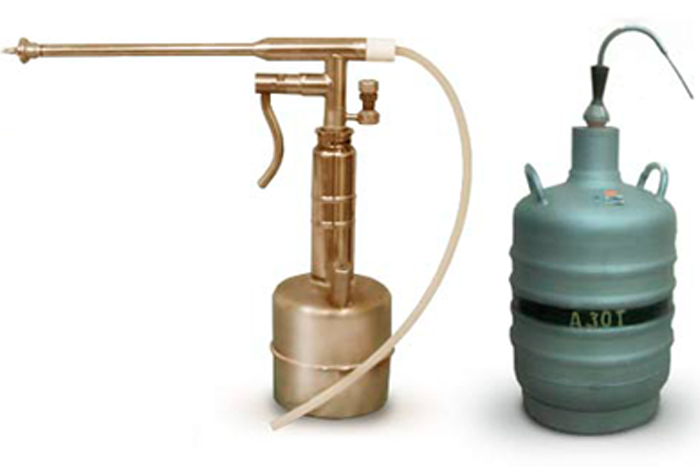
Electrocoagulation
The most painful of all methods. They produce not only local anesthesia, but also prescribe systemic antianginal drugs. The build-up is removed using a special device with a metal or wire nozzle.
This nozzle is supplied with a constant electric current, which cuts the skin growth and at the same time coagulates the blood vessels that feed it. The wound healing process takes about 10-12 days. The risk of re-development of the wart at this site is 1%.
Preventive measures to prevent relapse
Surgical intervention with complete removal of hyperkeratosis and its stalk prevents recurrence. However, proper nutrition, restoration of the endocrine system and liver function reduce the risk of relapses by half.
Additionally, immunomodulatory drugs and vitamin complexes can be prescribed. A healthy lifestyle, following the rules of personal hygiene and wearing comfortable shoes will help to avoid the appearance of warts.
Conclusion
A decrease in the resistance of the immune system, increased skin trauma and infection with the human papillomavirus is a triad that contributes to the development of warts.
With severe pain syndrome, surgical removal of growths may be vital. The choice of treatment method is up to you.
However, you should consult with a specialist. It is not enough just to remove the wart , it is important to further strengthen the entire body. Take care of yourself and your feet!


